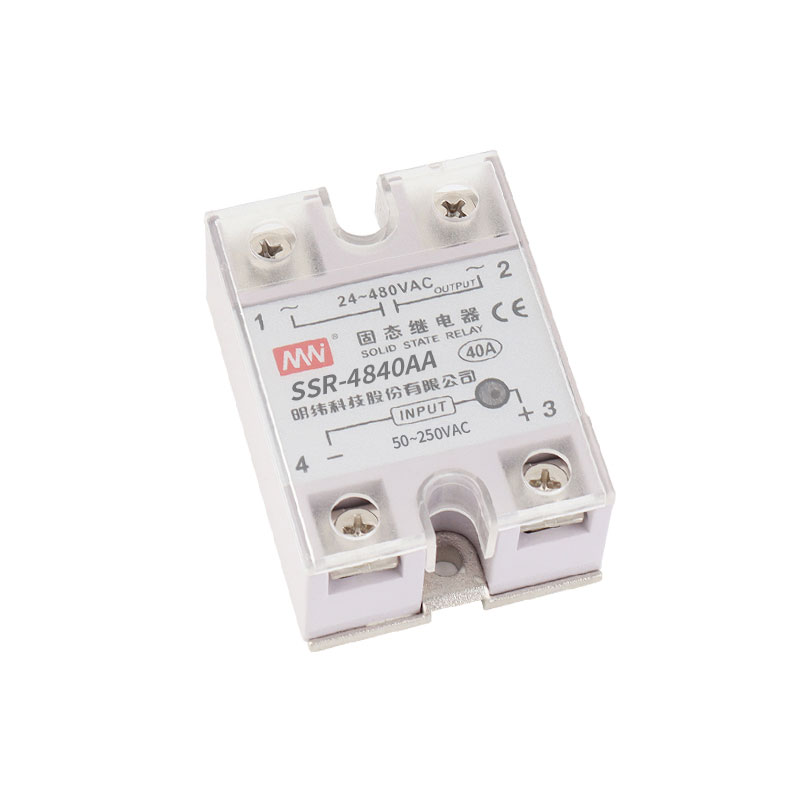Characteristics of a single solid-state relay
2023-10-13
A single solid-state relay (SSR) is an electronic switching device that uses solid-state components (typically semiconductor devices) to control the flow of electrical current without the use of mechanical parts such as contacts found in traditional electromagnetic relays. SSRs are used to switch AC (alternating current) or DC (direct current) loads, and they are known for their reliability, fast switching times, and lack of mechanical wear and tear.
Here are the key components and characteristics of a single solid-state relay:
1. Control Input: SSRs have a control input that typically accepts a low-voltage signal, such as a voltage or current, to activate or deactivate the relay. This control input is used to turn the SSR on or off.
2. Output Switching Element: The output side of an SSR contains a semiconductor switching element, often a thyristor or a triac. This element can handle the switching of electrical current when the SSR is turned on.
3. Isolation: SSRs often provide electrical isolation between the control input and the output to protect sensitive control circuits from high-voltage or high-current loads. This isolation is achieved using optical coupling or other isolation techniques.
4. Zero Crossing: Many SSRs are designed to switch the load at the zero-crossing point of the AC waveform. This minimizes electrical noise and reduces stress on the load.
5. Heat Sink: Solid-state relays generate heat during operation, especially when switching high currents. To dissipate this heat and ensure proper operation, SSRs are often mounted on a heat sink.
6. Status Indicator: Some SSRs have status indicators (LEDs) that provide visual feedback about the relay's state (on or off).
Single solid-state relays are used in a wide range of applications, including:
- Industrial Automation: SSRs are commonly used in industrial control systems for tasks such as switching heaters, motors, solenoids, and other electrical loads.
- Home Automation: They are used in home automation systems to control lighting, heating, and appliances.
- Photovoltaic (PV) Systems: SSRs can be used to switch the DC output from solar panels to inverters.
- Medical Equipment: SSRs are employed in medical devices for precise control of electrical components.
- HVAC (Heating, Ventilation, and Air Conditioning): SSRs are used for controlling heating elements and fans in HVAC systems.
- Food Processing and Packaging: SSRs are used to control heating elements and motors in equipment used for food processing and packaging.
SSRs are advantageous because they offer silent operation, long service life (since they lack moving parts), and can switch rapidly, making them suitable for applications where traditional mechanical relays may not be as reliable or suitable. However, they are also subject to overheating if not adequately cooled, and their cost can be higher than that of mechanical relays. The choice between an SSR and a traditional relay depends on the specific requirements of the application.



